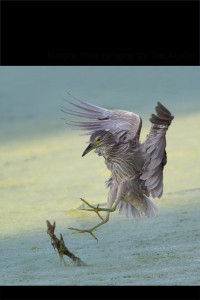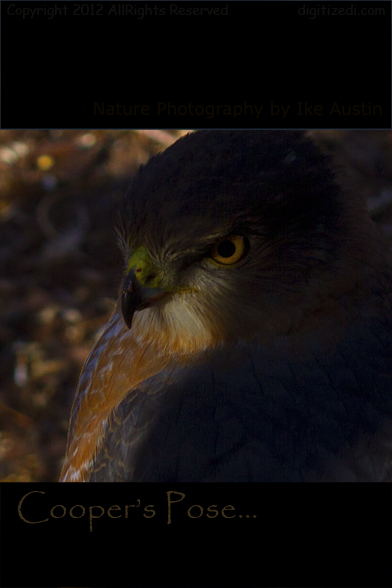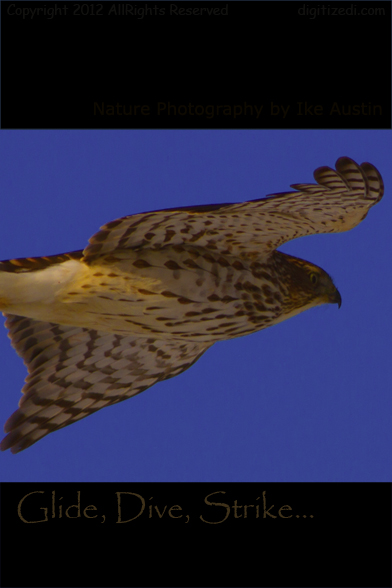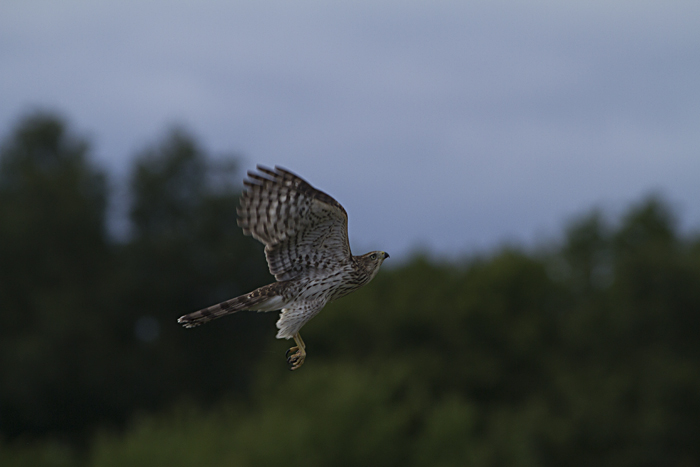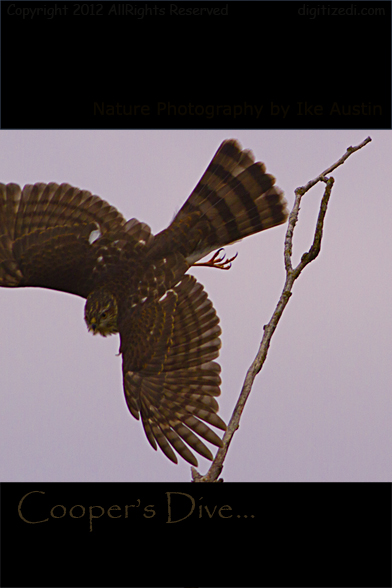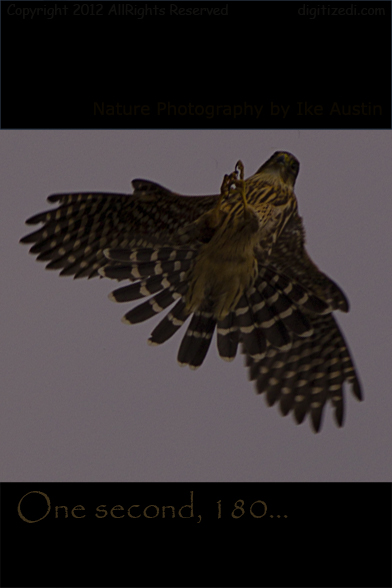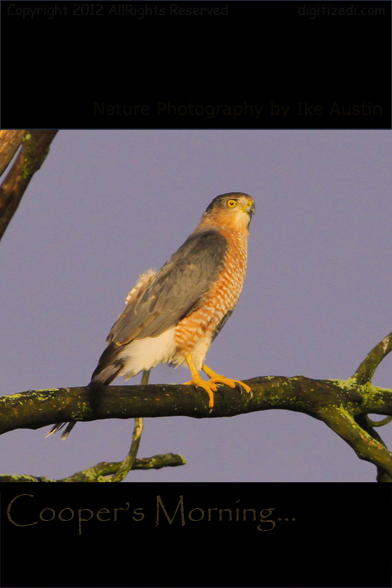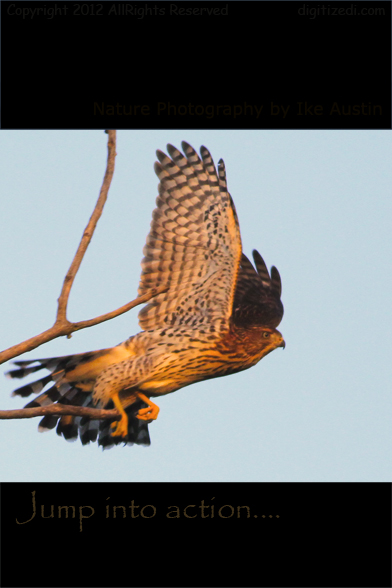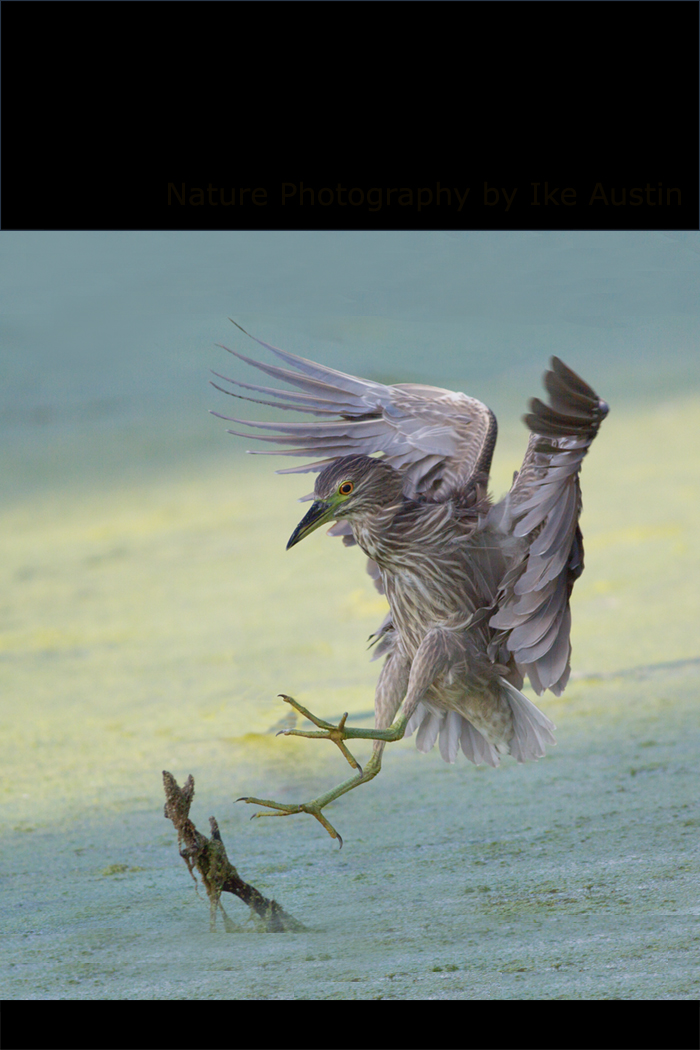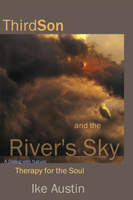Nature Photography – Michigan Flicker
Flicker the Bird – Speckled, Multi-Colored, Michigan Wetland – Brown, White, Red, Black and Tan
Colaptes auratus
Michigan Northern Flicker – Gold Finger
The Michigan Flicker is a true multi-colored, patterned bird. The Norther Flicker has a dash of red on the back of the head, a swatch of black patch on it’s upper chest. Speckled front with black dots all over, with a splash of white on the end top of the tail. With sandy brown color near the upper crown, a strip of sportsman black just beneath the eyes.

Michigan Flicker – Gold Fingers
Michigan Flicker – But the most attractive color of this bird is the gold underside covering the entire mantle and tertials from the tip of it’s wingtip to the primary tip projection of it’s tail. Golden under tail coverts, gold colored greater coverts on the edge of the wings, median coverts where a golden slate colored shade of glitter, the greater primary coverts, the marginal, lesser, median, and greater coverts all different shades of gold, gold, gold.
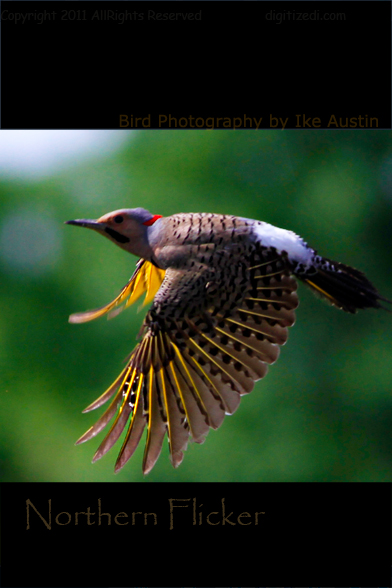
Michigan Flicker in Flight
The Northern Flicker is a summer Michigan wetland bird. This Flicker is mildly photographed bird. It is most recognized because of it’s speckled plumage and rather loud chitter chatty mating call early in the spring.
Michigan Northern Flicker
One hot early July summer afternoon I spotted a Northern Flicker darting across a wetland to eventually land on an extended tree branch. The day was clear and sun shinning bright; a great condition for capturing vivid elements of bird plumage color. During the early spring the Michigan Flicker will perform a series of loud mating calls followed by a rather rhythmical mating dance. This ritual will continue for several days with other male Flickers competing for the females attention. One one occasion I saw two Flickers locking talons as they spun around in a brief aerial dance. The Flicker will carve out a rather large hollow nest within an old dying tree. This is a very active bird that must remain ever vigilant, because the more numerous European Startling is in abundance and will try to steal the Flickers nest every chance it gets.
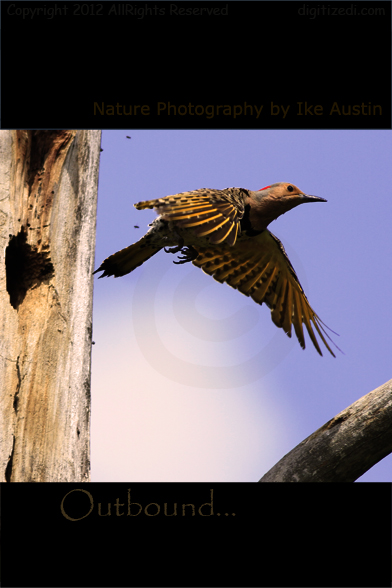
Michigan Flicker – Wetland
Michigan Flicker Younglings
The Female Flicker, works in cooperation with the male. Both birds engage in house hold choirs and parenting the young. The birds take turns gathering food and returning to the nest. I was also fortunate to capture a shot of three young Flickers being feed by regurgutation. The three younglings still have about a couple more weeks before they are ready to fledge.
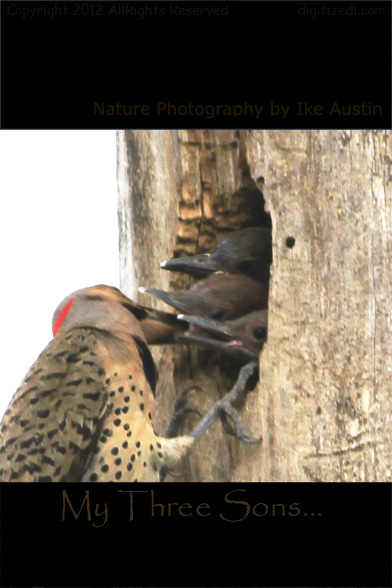
Michigan Flicker Younglings
Michigan Flicker Parenting
I was able to get a couple of good shots that clearly displayed what look like a rather stylish red t-bone located on the back of the Flicker’s head. I had to quickly decide and go-ahead and snap some close shots (something is better than nothing) before the bird fly off.
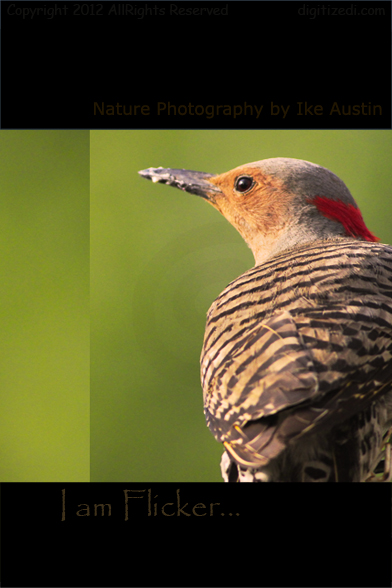
Michigan Flicker – Birds of Michigan – I am Flicker
Michigan Flicker in Flight
The above shot of a Northern Michigan Flicker may not be the best photo, but I did manage to capture the bird in one of it’s many house cleaning flights.
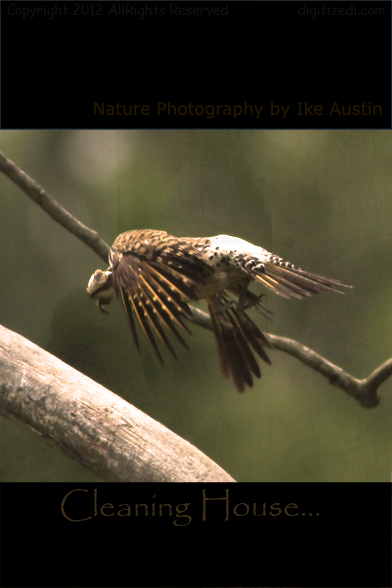
Northern Flicker – House Cleaning
Lessons Learned From Birds of Nature
The Michigan Flicker is a very vigilant bird, it has to be, the bird is under constant threat from other birds that are relentless in stealing the Flickers nest. During the feeding season, the Flicker is busy house cleaning, you can see the bird carrying numerous carefully wrapped waste sacks from the nest. What is most interesting, the Michigan Flicker will not just throw the waste out the nest to the ground. It is apparent that this birds has enough intelligence to is aware or possible threats; the bird seem to realize the presents of excrement might signal a hostile predator that a nest is occupying this particular tree. So, interestingly enough, this excrement is carried a considerable distance from the nesting location. View more photo here…
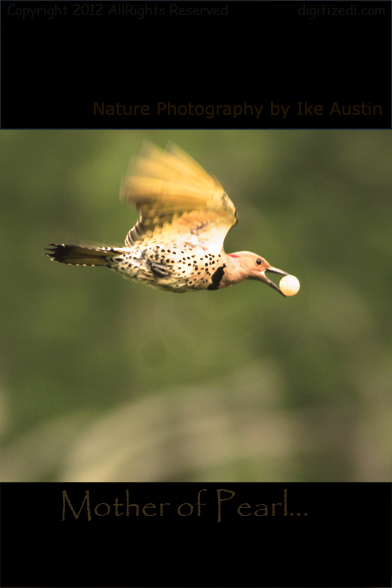
Northern Flicker – Carrying egg.
View other Michigan Birds Here… Michigan Birds.
About the Michigan Flicker
Nature Photography – Michigan Bird Identification
Photo Taken: Kensington Metro Park
Group: Wood Pecker
Name: Northern Flicker
Colaptes auratus
Appearance:
The Michigan Flicker is a 12-13 inch bird with, black speckled plumage front and back, the male is distinguished with a war paint black eye strip just below the pupil., or what might be considered the malar stripe area of the birds face.
Adult:
Color is majority beige and black, female is same color..
Flight Characteristics:
Jittery quick wing beats, several flaps then pause and a slip dip when in flight. The Northern Flicker is an average flier in terms of in flight speed.
Habitat: The Michigan Northern Flicker prefers parks, lakes and wetland areas.
Nesting: Flicker will construct or hew an open cavity nest inside old dead trees. A large cavity is created in preparation to contain several offspring.
Nest Location:
Nests are located 10-40 feet above the ground.
Incubates 5-8 (several white perfectly shaped round eggs for appx 12-14 days (2 weeks).
Mating Habits: The Michigan Flickers mates for extended periods.
Feeding: Seeds, insects (mainly ants), berries and some nuts.
Call:
Mating season; a s series of elongated rhythmical squeaks, which includes an bobbing up and down head motion.
Regular Season: A quick rapid series of chirps.
This Weeks Honorable Mention
Associations that we feel provide real value to the birding community.
Detroit Audobon Society Website
Purpose: To promote awareness and protection of the environment through education, research and advocacy Mission Statement and Code of Ethics… Read More Here… Detroit Audubon Society (link)
Membership Required: Y, $Donation/yr.
Informative Website Information: Y
Year Long Events: Y
Active Birder Blog(s): Y
Dialogue With Nature Informative Rating: 8
Michigan Bird Atlas
Michigan Flicker: Research and statistics, abundance and population. Read more here…
—————————————————————————————————
Nature Photography by Ike Austin – Michigan
Photography that is Therapy for the Soul
Michigan Birds
Nature Photography by Ike Austin – Michigan
Photography that is Therapy for the Soul
Michigan Birds
National Geographic
2011 Editors Choice Winning Photo
